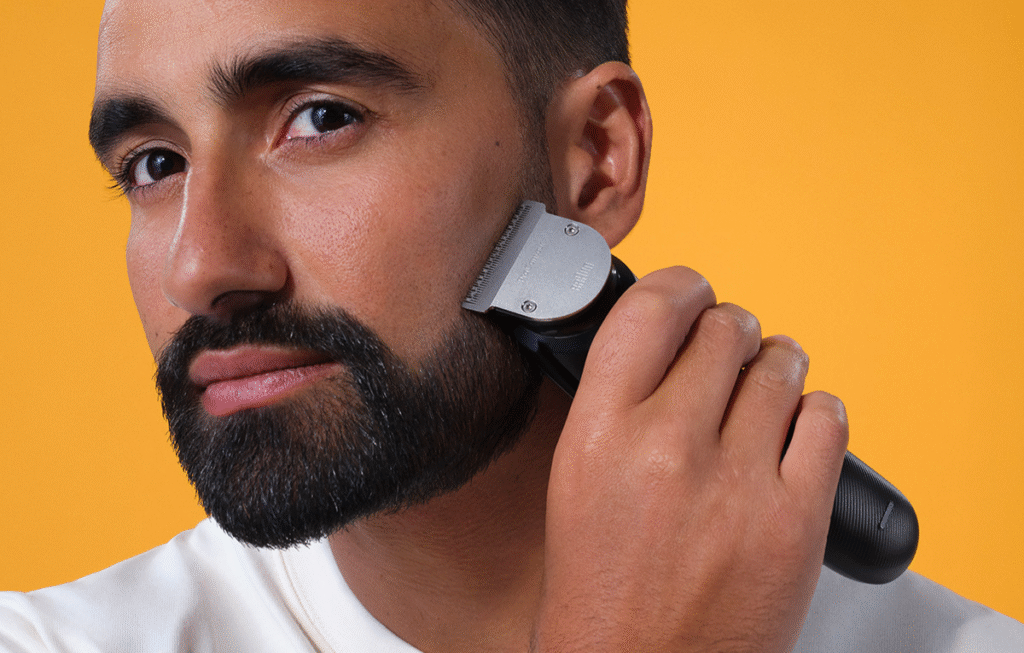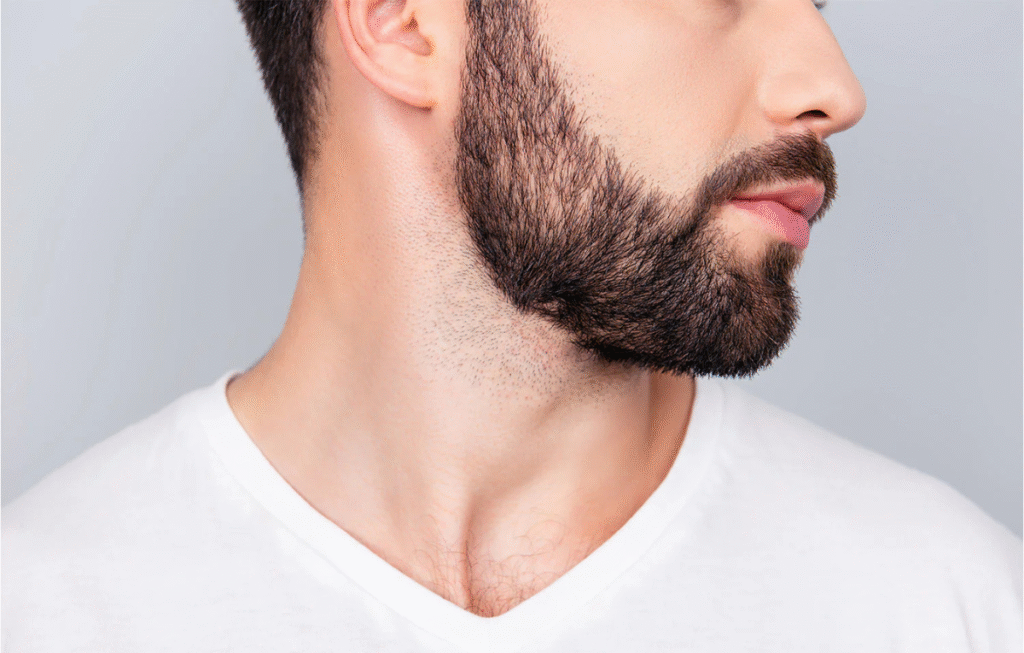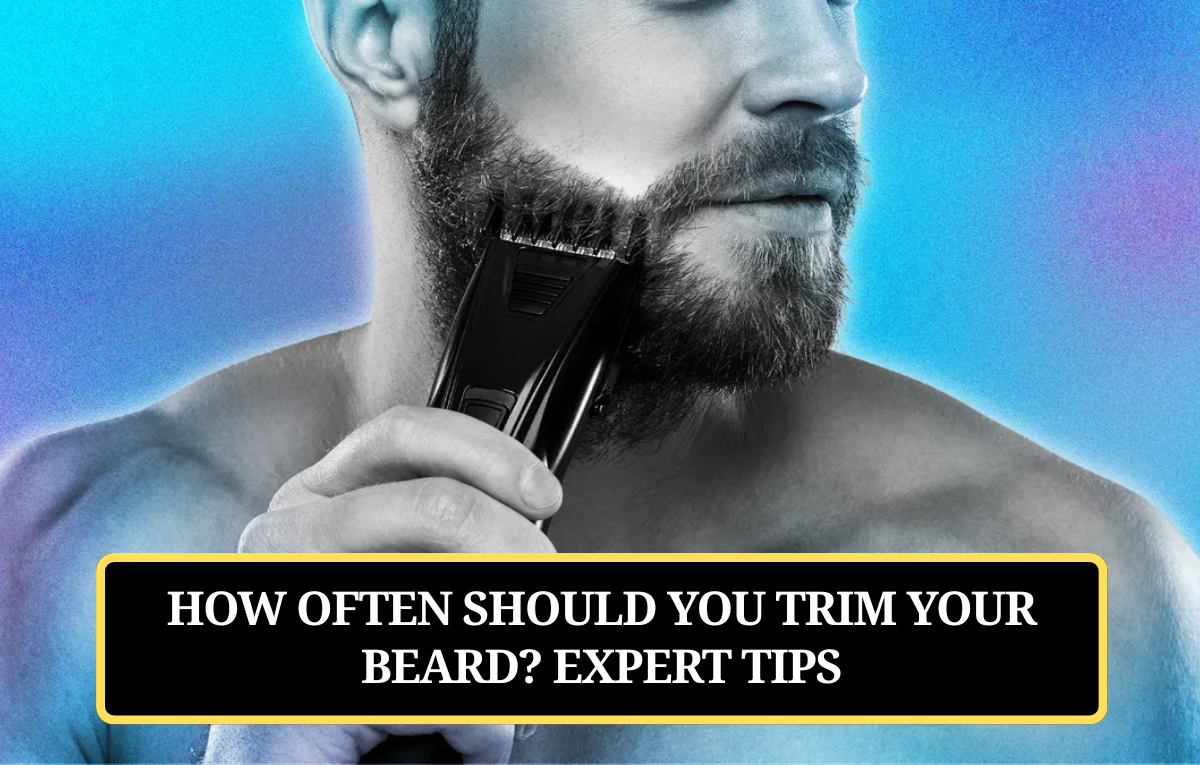Introduction: The Science of Bearding
Beards are not merely face hair — they are a style statement, a symbol of self-assurance and an interpretation of personality. Whether sporting a wild full beard, corporate-looking shave or brief stubble, it requires a little more than simply letting it grow to form the ideal beard.
The truth of the matter is. even the most natural looking beard will need a lot of maintenance. Trimming is necessary not just to ensure that your beard is looking its best, but to promote healthy beard development as well. Not to mention, how often should you trim your beard?
The response depends on your growth rate and style and even your styling goal. Here in this guide, we will dissect the most optimal trimming schedule, trimming tool types, and techniques – all from grooming professionals – so that your beard is professional-looking, stylish and looks effortless manly.
Why Trimming Is Important for Beard Health

The majority of men believe that trimming their beard slows the growth down, but that’s a misconception. Trimming will not affect the rate of growth of your beard — it simply makes it grow better.
The following are reasons why you have to trim:
- Removes split ends: Stops frizz and rough texture.
- Stimulates even growth: Makes beard full and evenly-looking.
- Supports structure: Stops “wild” or “unkempt” look.
- Reduces itch and redness: Keeps skin underneath in tip-top condition.
Even if you have a long, bushy beard, regular trimming keeps your facial hair growing neatly and even.
Identifying Beard Growth Stages
Before you can figure out how often you should be trimming, you first need to identify your beard’s natural growth stages. All men’s beards go through the same basic stages:
- Stubble Stage (0–2 weeks): Hair starts to fill in but may appear uneven or spotty.
- Short Beard Stage (2–6 weeks): Fuller defined shape begins to form.
- Medium Beard Stage (6–12 weeks): Thicker growth, and they must be trimmed and shaped.
- Full Beard Stage (3 months+): At this point, you can boast about both the length and the thickness — so it is time to trim for the purpose of getting the structure right.
Your trimming frequency will be determined by the stage you are currently in as well as the look you want to keep.
How Frequently to Trim — Depending on Your Beard Type
There is no universal answer to this question. Various types of beards have their specific trimming schedules. Here is the story:
1. Stubble Beards (Trim Every 2–5 Days)
- If you prefer a brief, scratchy stubble, you’ll be trimming away — every 3 days or so. This maintains the beard sharp without it looking patchy or unruly.
Tip: Use an adjustable guard trimmer (1–3mm) for an even look.
2. Short Beards (Trim Every 1–2 Weeks)
- A short beard provides a clean, masculine look without a full lumberjack status. Trimming every 7–10 days balances between tidy and natural.
- Shape the neckline and cheek lines to keep edges sharp.
3. Medium Beards (Trim Every 2–3 Weeks)
- If you’re going for a medium beard — thick but not overly long — trimming every 2–3 weeks prevents stray hairs from ruining your look.
- Clean up the neckline and shave off uneven areas without cutting too much length.
4. Full Beards (Trim Every 4–6 Weeks)
- For those who enjoy the traditional full beard, every month or so trimming keeps it looking deliberate and not unruly.
- Trim using scissors or a long-guard clipper to maintain bulk while defining edges.
5. Long or Styled Beards (Trim Every 6–8 Weeks)
- When your beard has reached beyond the 3–4 inch mark, trimming every 6–8 weeks keeps the shape in control while allowing natural length to be.
- At this stage, styling symmetry and volume management with beard balm should become a priority.
Signs It’s Time for a Trim
Even when you’re on a timetable, your beard might have other ideas about when it requires a trim. Watch for these cues:
- Unruly or uneven hairs sprouting out.
- Split ends or coarse texture.
- Beard losing its sharp definition.
- Increased itchiness or dryness.
- Neckline merging with chest hair.
When your beard starts to look or feel “wild,” it’s time to trim — no matter how long it has been.
Pre-Trim beard preparation

Tugging, uneven lines, and even irritation can be caused by trimming without preparing the beard. Find out below the pro’s way of doing things:
- Beard Washing: Use warm water and a beard shampoo for cleansing off the dirt and oil.
- Beard Drying Thoroughly: Dry completely to avoid mistaking long wet hair for longer ones which may eventually lead to cutting.
- Beard Combing or Brushing: Use a brush to take the hair from root to tip and also comb its natural direction for a uniform cut.
This quick process guarantees accuracy and saves you from tangles.
The Proper Tools for the Job
The perfect beard requires proper tools. Here’s what each gentleman should have on his shelf:
- Beard Trimmer: To manage length and set edges.
- Beard Scissors: Perfect for trimming and shaping with precision.
- Beard Comb or Brush: Help detangle and style.
- Beard Oil or Balm: Nourishes and gives your beard a shiny finish after trimming.
Pro Tip: Clean and lubricate your trimmer blades regularly for peak performance and cleanliness.
Trimming Like a Pro
Trimming your beard at home is easy — you just need the right technique.
Step 1: Establish Your Neckline
- Imagine a “U” shape from one ear to the other, just above your Adam’s apple. Tidy up everything below it.
Step 2: Establish Your Cheek Line
- Be defined but natural. Avoid cutting too low — it will look artificial.
Step 3: Set the Length
- Start with the highest guard setting and lower it gradually. This prevents over-trimming.
Step 4: Blend and Achieve Symmetry
- Trim fly aways and sparse spots using scissors. Use a mirror to comb over daily to check for symmetry.
Step 5: Condition and Finish
Apply beard oil or balm afterward to soothe the skin and reveal shine.
Beard Trimming Errors to Prevent
Mistakes happen even with experienced groomers. Here are common trimming errors and how to fix them:
- Trimming too soon: Give your beard a minimum of 3–4 weeks of growth before outlining.
- Cutting too much at once: Trim in phases at all times.
- Neglecting the neckline: A messy neckline ruins the entire appearance.
- Using scalp shampoo: Dries out your beard — use beard grooming products.
- Ignoring aftercare: Ignoring moisturizing leads to beard dandruff and itch.
Don’t do these and your beard will forever be intentional and clean-looking.
Maintaining a Healthy Beard Between Trims
Trimming keeps your beard looking neat — but everyday maintenance is what makes it robust, glossy, and luscious.
Do this daily routine:
- Wash (2–3x a week): Use beard wash or mild cleanser.
- Moisturize every day: Apply beard oil after showering to seal in moisture.
- Brush or comb: Teaches your beard to grow in one direction and avoids tangles.
- Exfoliate skin underneath: Eliminates dead cells and encourages growth.
Remember: A fantastic beard is 50% trimming, 50% maintenance.
How to Coordinate Trim Frequency with Beard Goals
Your beard cycle should be synchronized with your lifestyle and grooming goals:
- Professional Look: Trim every 1–2 weeks for edginess.
- Relaxed Look: Once a week or every 2–3 weeks is fine for a natural shape.
- Growing It Out: Cut every 4–6 weeks only — just clean up the edges.
- Experimental Looks: Adjust as needed — shorter time frames between shaping cycles.
Professional Secrets to Better Trimming Results
1. Always cut in good light.
This helps you spot uneven areas that you otherwise miss.
2. Use a multi-angle mirror system.
Side mirrors help you keep both sides even.
3. Never aim for perfection.
Beards are asymmetrical by nature — leave a natural finish.
4. Clean and dry tools.
Prevents infection and glides trimming.
5. Use natural oils.
Coconut, argan, or jojoba oil hydrates your beard and prevents it from becoming wiry.
Seasonal Beard Trimming Tips
Your beard responds differently to the weather. Adapt your practices accordingly.
- Summer: Trim ever so slightly shorter for less heat and lower sweat buildup.
- Winter: Keep it ever so slightly longer for insulation from the cold wind.
- Monsoon: Thoroughly rinse and dry out thoroughly to prevent dampness and odor.
Seasonal adjustments will ensure your beard remains healthy year-round.
Trimming Your Beard Based on Face Shape

Trimming your beard is not just how long, but also accommodating your face shape.
- Round Face: Trimming sides of your beard, and emphasizing more length below the chin.
- Square Face: Steady jawline, but tone it down a bit.
- Oval Face: Practically any beard will suit you, only maintain proportions.
- Rectangular Face: Trim the bottom of your beard hairs shorter, while maintaining the sides of the beard denser.
Knowing your face shape alone, means your beard will be fine in relation to your own natural features .
Post-Trim Aftercare Queues
After your trim, don’t forget the end of your trim:
- Rinse loose hairs off.
- Apply beard oil or balm to condition your beard.
- Massage it in to enhance blood flow.
- Steer clear of using any of the pungent products, such as alcohol or harsh ones, on your face following a trim.
This easy process will leave you with a healthy, shiny, and itch-free beard.
In conclusion: Uncover Your Perfect Beard Routine
Now, how often do you trim your beard? The short answer is trim whenever it requires trimming, not merely when you feel like it.
In case you want a clean and short appearance, you need to cut it weekly. If you, however, want a long beard, once every month cutting should do. The key components of a well-groomed beard include consistency, care, and confidence in yourself.
A groomed beard represents self-expression and is not perfection; it is your own decision. So, get out your trimmers, use the tips given above, and show off your beard as the style that it is.
FAQs:-
What’s the best way to keep a beard healthy between trims?
Wash regularly, apply beard oil daily, and brush your beard to distribute natural oils evenly.
How do I know it’s time for a trim?
If your beard looks uneven, feels rough, or loses shape, it’s time for a light trim.
What about long or full beards?
Longer beards should be trimmed every 3–4 weeks to manage split ends and maintain style.
